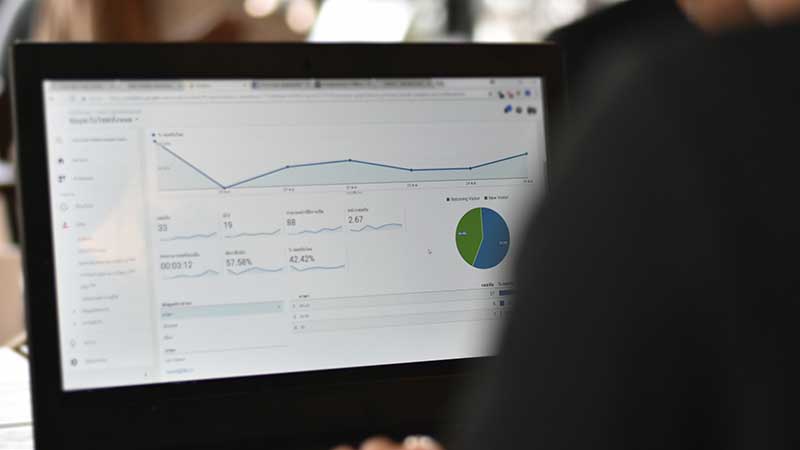February 16, 2023
GA4 vs. Universal Analytics: Transition Guide

Google Analytics is an essential tool for businesses to measure website and app performance, and it is currently going through a major change. As businesses continue to prioritize data-driven decision-making, understanding the key differences between Google Analytics 4 (GA4) and Universal Analytics (UA) becomes increasingly essential.
There are critical distinctions between these two platforms and now is the time for businesses to transition to GA4 for a more comprehensive and actionable view of their digital data. Universal Analytics, the current default reporting option, was deprecated in July 2023, making way for Google Analytics 4 (GA4).
In this article, we will discuss seven key differences between GA4 and Universal Analytics, which are essential to understand as you make the switch.
One of the most significant advantages of GA4 is its ability to track users across platforms seamlessly.
GA4 unifies data from websites and mobile apps, providing a comprehensive understanding of user behavior regardless of the device or platform used. This cross-platform tracking empowers businesses to optimize their marketing strategies and user experiences for both web and app audiences.
While UA operates on a session-based data model, GA4 adopts a more flexible, event-driven model.
With GA4, all user interactions on a website or app are treated as events, enabling a more holistic view of user behavior, whereas in Universal Analytics, interactions were captured in various hit types, such as page views, transactions, and social interactions. In GA4, event parameters are used instead of classifications to provide additional information about the action a user took. Since the data models are different, it’s essential to implement new logic instead of copying existing event logic from Universal Analytics to GA4. This shift allows businesses to track a wider range of interactions and gain deeper insights into the customer journey.
The session calculation in GA4 is also different from Universal Analytics.
A session starts with the session_start event in GA4, generating a session ID with which all subsequent events during the session are associated. In UA, a session represents the period of time that a user is actively engaged with the site, ending after 30 minutes of inactivity, the clock passing midnight, or encountering new campaign parameters.
In GA4, exports to BigQuery are available to all properties, unlike Universal Analytics, which was limited to Analytics 360 properties.
The exports are free and allow the sending of raw events to BigQuery, which can be queried using SQL.
GA4 offers enhanced analysis and reporting features compared to UA.
With advanced analysis capabilities, businesses can create custom reports, explore data using drag-and-drop features, and segment users more effectively. The platform also includes improved funnel analysis, enabling businesses to identify bottlenecks in the user journey and optimize conversion paths.
Google Tag Manager is more important than ever with GA4.
All goals are event-based, making it crucial to know your way around Google Tag Manager to create custom events and dimensions.
The account structure in GA4 only contains two elements: account and property.
Unlike UA, GA4 does not contain views. Instead, GA4 introduces data streams, which represent a flow from a website or app to Analytics. Each GA4 property can have up to 50 data streams and a limit of 30 app data streams. In Universal Analytics, you were able to have 20 “goals” per view, but in GA4 it’s only 30 “conversions” in total. There is a significant decrease in the total number of unique conversions that can be tracked.
GA4 leverages Google’s machine learning and AI capabilities to deliver predictive insights and automated recommendations.
These features help businesses identify trends, predict user behavior, and receive automated suggestions for improving website and app performance. In comparison, UA lacks such advanced capabilities, limiting its potential for businesses to capitalize on data-driven insights.
While Universal Analytics has served businesses well, it’s clear that GA4 is the future of web analytics. The shift to an event-driven data model, cross-platform tracking, enhanced privacy features, advanced analysis capabilities, and AI-powered insights make GA4 a more powerful and comprehensive solution. It’s time for businesses to embrace GA4 and unlock its full potential in driving data-driven decisions and optimizing digital experiences.




